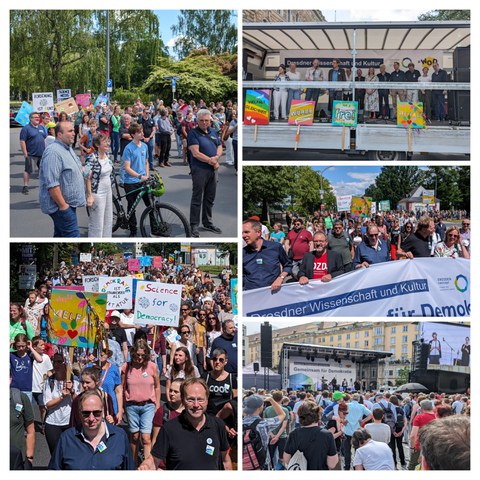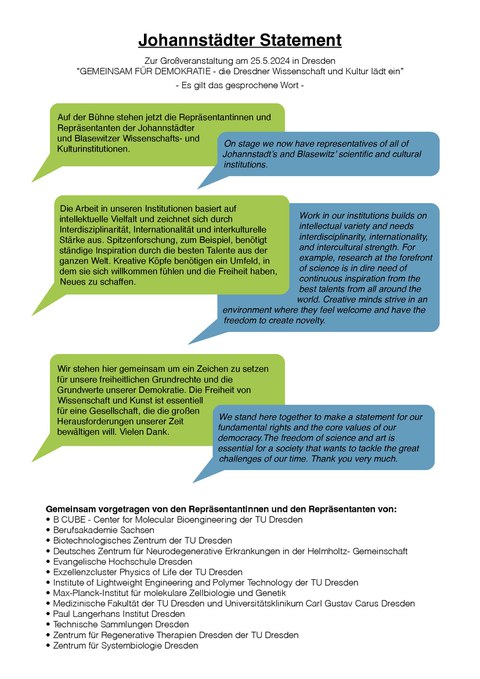May 28, 2024
United for Democracy: Johannstadt Statement by Scientific and Cultural Institutions
On May 25, 2024, approximately 2,500 people came together in Dresden to send a strong signal for the value of democracy and liberal-democratic coexistence and celebrated a peaceful and joyful festival of democracy. More than 60 institutions from science, art, and culture in Dresden - including the Technische Universität Dresden (TUD) under the umbrella of DRESDEN-concept e. V. and the alliance #WOD Weltoffenes Dresden - were invited to the event.
“For the first time, science and culture, together with citizens, are setting an example for the protection of our liberal democratic order,” said Prof. Ursula Staudinger, Rector of the TUD, who emphasized the paramount importance of democracy for a peaceful and free coexistence in her opening speech at the beginning of the main event on the Altmarkt.
“We are living in a time in which our democracy is being deliberately undermined and threatened. We must fight the beginnings. Our liberal democracy cannot be taken for granted. It must be lived and protected anew every day. That is why we want to engage in respectful discussions on stage today and then at stands on exciting topics relating to our democracy, even when opinions differ,” continued Prof. Staudinger.
The event began at 2 p.m. with a march at four locations in the Dresden city area. A stream of around 500 scientists and citizens made their way from Johannstadt to the Altmarkt. The program beforehand included speeches by Katharina Wüstefeld (Helpline Saxony), the students Daniel Haak and Gustav Uschner as well as a joint "Johannstadt statement" by the directors of various Johannstadt research institutions.
After the arrival of all marches at the Altmarkt, a stage program began at around 3 p.m. with contributions from the musical statement “#LautSein” by the Dresdner Sinfoniker, which was developed especially for this occasion, and the Hamburg musician BOSSE. The event was hosted by MDR presenter Sissy Metzschke and science communicator Simon Hauser.
In addition to the artistic program on stage, visitors were able to visit ten pavilions to learn about various topics, ranging from internationality in science to action art and the didactics of democracy. In each of the pavilions, there was an opportunity to exchange ideas with researchers and artists and to celebrate democracy together.


